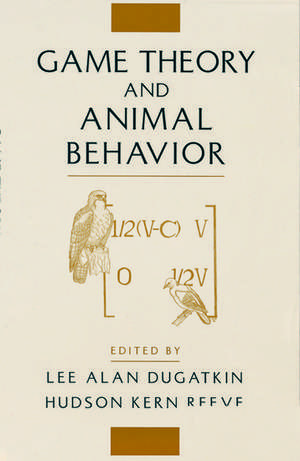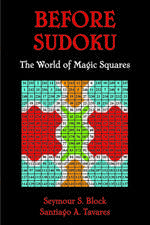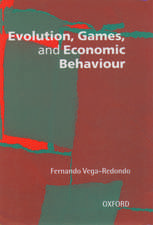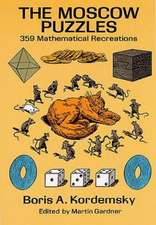Game Theory and Animal Behavior
Lee Alan Dugatkin, Hudson Kern Reeveen Limba Engleză Paperback – 13 apr 2000
Preț: 592.08 lei
Preț vechi: 849.82 lei
-30% Nou
Puncte Express: 888
Preț estimativ în valută:
113.31€ • 123.04$ • 95.18£
113.31€ • 123.04$ • 95.18£
Carte tipărită la comandă
Livrare economică 11-17 aprilie
Preluare comenzi: 021 569.72.76
Specificații
ISBN-13: 9780195137903
ISBN-10: 0195137906
Pagini: 336
Ilustrații: line figures, tables
Dimensiuni: 229 x 152 x 19 mm
Greutate: 0.49 kg
Ediția:Revised
Editura: Oxford University Press
Colecția OUP USA
Locul publicării:New York, United States
ISBN-10: 0195137906
Pagini: 336
Ilustrații: line figures, tables
Dimensiuni: 229 x 152 x 19 mm
Greutate: 0.49 kg
Ediția:Revised
Editura: Oxford University Press
Colecția OUP USA
Locul publicării:New York, United States
Recenzii
an authoritative and widely accessible overview of the advances in this area
Describes many interesting examples of animal behaviour, including games between foraging producers and scroungers, reciprocal grooming in impala, territorial defence by birds and spiders, animal communication, parent-offspring conflict, and colony founding by ants. There are many accounts of experimental tests of game theory models, along with clear discussions of the limitations of the game theory approach. The quality of writing (often a problem in edited volumes) is uniformly good. The chapter by R. Gomulkiewicz is especially important, because it connects game theory, other optimization methods, and quantitative genetics with a focus on an empirical strategy for detecting adaptation and constraint. --Nature
The book is a worthwhile addition to graduate collections and some undergraduate collections emphasizing behavioral ecology, as most chapters are sufficiently general to be of use for a longer time than the typical symposium volume.--Choice
Listed in Wildlife Activist
Describes many interesting examples of animal behaviour, including games between foraging producers and scroungers, reciprocal grooming in impala, territorial defence by birds and spiders, animal communication, parent-offspring conflict, and colony founding by ants. There are many accounts of experimental tests of game theory models, along with clear discussions of the limitations of the game theory approach. The quality of writing (often a problem in edited volumes) is uniformly good. The chapter by R. Gomulkiewicz is especially important, because it connects game theory, other optimization methods, and quantitative genetics with a focus on an empirical strategy for detecting adaptation and constraint. --Nature
The book is a worthwhile addition to graduate collections and some undergraduate collections emphasizing behavioral ecology, as most chapters are sufficiently general to be of use for a longer time than the typical symposium volume.--Choice
Listed in Wildlife Activist















